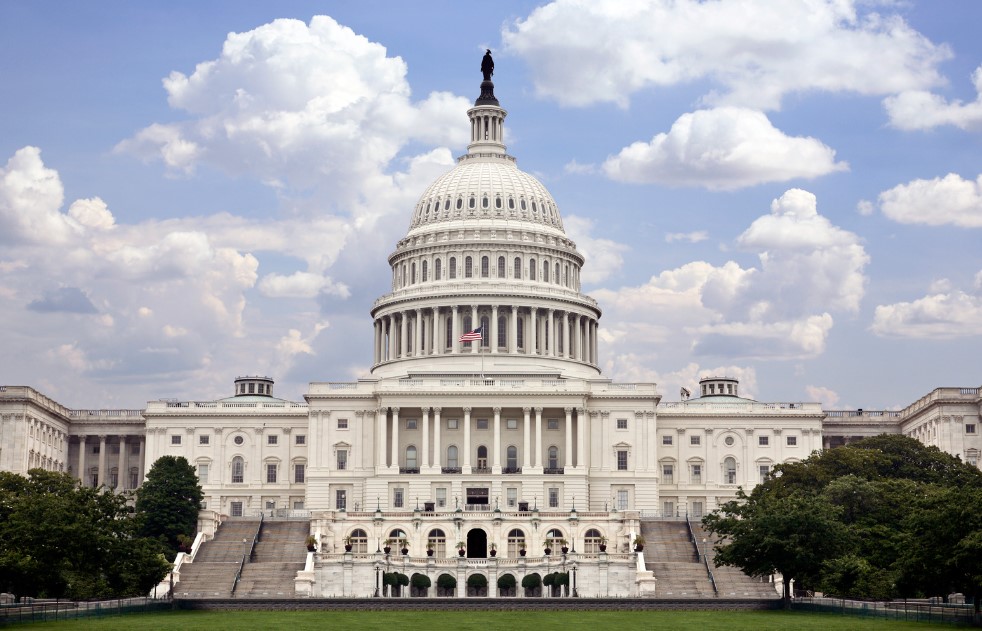“I deeply respect this office, but I love my country more. It has been the honor of my life to serve as your president. However, I believe that defending democracy is more important than any title.” With these words and a brief 11-minute speech, Joe Biden, President of the United States, explained his decision to withdraw as a candidate for re-election. This marks the end of a week dominated by analyses of how this shift will affect the market in the race for the White House.
Undoubtedly, the first question to answer is who will replace Biden as the candidate. For now, the name gaining the most traction—in terms of money and public support—is Kamala Harris. “In recent days, the idea of mini-primary elections has gained momentum, potentially allowing for a short and open competition among the best and brightest of the Democratic Party. This is particularly relevant since the approximately 4,700 delegates responsible for nominating a new Democratic candidate are not obligated to support any particular candidate following Biden’s decision to withdraw,” notes Kaspar Köchli, an economist at Julius Baer.
According to Ahmed Riesgo, CIO of Insigneo, although senior Democrats are not thrilled with Harris, it is widely assumed that she will perform better than Biden at this point. “Given the aggressive shift of consensus opinion towards a Red Wave in November, replacing Biden with Harris on the ballot could alter expectations somewhat,” says Riesgo.
In his view, “removing Biden’s vulnerabilities from the Democratic side should immediately reduce the polls, while Trump continues to face a myriad of political headwinds that will come to the forefront as people stop talking about Biden’s physical and mental capabilities.”
For now, Harris’s chances of winning the Democratic nomination are around 80%, but only the meeting of the Democratic National Convention’s Rules Committee on Wednesday will provide more clarity on how the coming weeks will unfold.
In Köchli’s opinion, a Harris campaign signals fiscal and trade policies consistent with Biden’s, reaffirming the status quo in the markets. “The market has reacted moderately, slightly improving the odds of a Harris presidency over Trump to 40%. Markets will closely watch if Democrats can use the momentum of change to expand support and overcome what one Democratic strategist described as a situation where Trump is unpopular, but Harris is simply unknown, thereby reducing the current slight Republican advantage in presidential and congressional races,” adds the Julius Baer economist.
Advantage for Trump
“We consider that if a Democratic victory occurs, it will be to maintain a scenario of political continuity, as what a Democratic presidency implies is reasonably predictable. However, there is still great uncertainty about what exactly a Trump presidency would mean for the economy and markets,” says Lizzy Galbraith, a political economist at abrdn.
Most analyses from investment firms agree that a Republican victory scenario is increasingly likely. What would be its impact on the market? According to Galbraith’s analysis, of the 60% chance of a Trump victory, three possible scenarios could arise: “A 2.0 trade war with a 30% chance; a 100% Trump with a 15% chance; and Trump fulfilling market expectations with another 15%.”
In Mathieu Racheter’s opinion, Head of Equity Strategy Research at Julius Baer, Trump’s victory favors cycles. “We expect a modestly positive initial reaction from the equity market following the election results. This is based on the prospect of laxer regulation, the application of antitrust mergers, financial sector regulation, and a likely extension of the Tax Cuts and Jobs Act (TCJA), which expires in 2025, alleviating fears of a corporate tax increase,” he notes.
These developments, along with increased fiscal spending, should lead to higher economic growth in the US (2.4% versus our forecast of 1.9%), resulting in higher profit growth for the equity market, according to Racheter. “Historically, during an election year, equity volatility tends to increase mid-year, just before the primaries, and begins to decrease after the elections. Depending on the results starting to reflect in the equity markets in the coming months, opportunities will open up for investors,” he elaborates.
According to George Brown, senior US economist at Schroders, a Trump victory could pose inflationary risks for the US economy. “The central pillar of Trump’s economic agenda is protectionism. If re-elected, Trump has proposed increasing it to 60% and gradually eliminating all imports of essential goods from China. Additionally, imports from the rest of the world would be subject to a 10% basic tariff. If implemented, these proposals would result in a significant inflationary shock. However, we suspect Trump does not intend to fully implement them but rather use them selectively to gain trade concessions,” explains Brown.
The consensus is that a Trump presidency would mean corporate tax cuts, deregulation, a reversal of the climate change agenda, and higher national tariffs. “We also expect a more aggressive foreign policy, especially against China, which could also be bad news for emerging markets. There is also likely to be less aid for Ukraine and less support for NATO,” adds Steven Bell, chief economist for EMEA at Columbia Threadneedle Investments. Finally, Bell states that the impact on the dollar is unclear, but both the fundamental context and the prospect of Trump 2.0 seem to favor equities. “But it is really a wait-and-see scenario,” he notes.
According to AXA IM, each candidate brings a different policy: “Trump would likely focus on tariffs, tax cuts, migration, and deregulation. His victory would also raise concerns about geopolitics, all of which would mean headwinds for growth. Harris is likely to adopt Biden’s plan to focus on partial extensions of tax cuts and deficit reduction with a milder crackdown on immigration. An opposition-led Senate would likely block the approval of that agenda.”
The Impact on Markets
As Garrett Melson, global strategist at Natixis IM Solutions, points out, “despite all the consternation around the winners and losers of the elections, historically the effect of elections is quite ephemeral, and the profit cycle ultimately determines market behavior after the elections.”
In general terms, he reminds us that the political repercussions in the markets tend to be short-lived. In fact, he points out that there are both upside and downside risks to consider in any election result, particularly a Trump victory, but he explains that companies have repeatedly demonstrated their dynamism and adaptability, suggesting that investors should have confidence in the markets’ ability to shake off any short-term impact from electoral events as the fundamental economic backdrop remains constructive.
“Trade remains a considerable wildcard and an area where Trump continues to have strong convictions and flexibility to act largely unilaterally without congressional approval. The increase in tariffs not only on China but also on Europe is likely to weigh on growth, both domestically and internationally. Tax cuts are a concern as the policy of the Tax Cuts and Jobs Act is extended and potentially new cuts are unveiled,” Melson specifies.
Finally, Michaël Nizard, head of Multi-Assets and Overlay at Edmond de Rothschild AM, believes Biden’s withdrawal could benefit European markets. “It would not be surprising to see a slight recovery in European risk assets compared to the US after several weeks of clear underperformance. In fact, several econometric studies show significant impacts on European growth, around 1%, in the event of a resurgence of strong trade tensions related to Trump 2.0. As for the ongoing sector rotation, we believe it may continue, and the recent underperformance of the technology sector will depend more on the upcoming earnings season than on the national political situation,” he explains.
Regarding the dollar, Nizard insists that the Republican candidate has been quite favorable to a depreciation of the greenback in the primary interest of American manufacturers. “We explain the dollar’s decline in July more as a response to the easing of US rates and the imminence of the first Fed rate cut in September. Thus, we consider that the dollar will stabilize awaiting new data. In the longer term, the widening of US deficits will raise the question of the sustainability of its financing and the valuation of the dollar,” he concludes.




